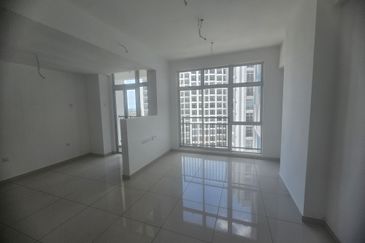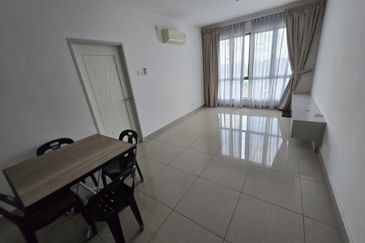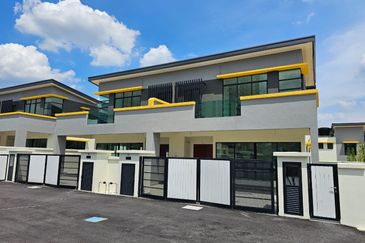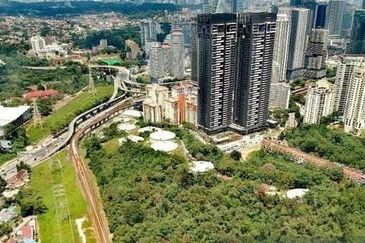
- “Another thing we are suggesting is that when you file income tax, the number of houses you have bought will be automatically stipulated in your income tax form. It will also have information on who owns homes and who are renting homes. This is to get more accurate data and see what the market needs."
PETALING JAYA (May 14): The Ministry of Housing and Local Government is considering to introduce a new Act called the Real Property Development Act to streamline the real estate market in Peninsular Malaysia, said Housing and Local Government Minister Nga Kor Ming at the Regional Housing Conference 2024 on Tuesday.
Organised by Rehda Institute, an independent think tank focusing on research and education relating to housing matters, the conference was attended by 20 local government authorities, housing experts from the region including Australia, Singapore and Hong Kong, as well as other industry stakeholders.
“Over the past decade, the housing industry has undergone significant transformations in response to the evolving needs of our society. These changes push us to become more resilient, and it’s time to review our regulations, and act to make them more business-friendly and protect buyers’ interests.
“[We are considering this Act] to govern the protection of the interest of purchasers, developers and landowners. [This] not only will apply to residential properties, [but also] to commercial properties. However, this is still subject to discussion. I am not here to impose any new policies, but we are open to discussing ideas,” Nga further stressed.
This is an important direction, Nga said, as the country should not be left behind in making safe and regulated property investment decisions. Some countries that have a similar Act in place are Dubai and Australia, he shared.
Providing updates on the Housing Integrated Management System (HIMS), National Housing Department director general Datuk Jayaselan Navaratnam revealed that the ministry aims to execute a big data integration proposal. This would be carried out with permission for integration with all agencies into a single data centre for analytic purposes.
“Currently, we are in the final phase of our e-SPA (electronic sale and purchase agreement) project, which has already been in place since Jan 31, 2022. In the final phase, we are working on implementing digital signatures and e-stamping — that means end-to-end will be completed in the system itself. This also allows documents to be sent via soft copies instead of hard copies. We are targeting to complete this phase by Oct 18 this year.
“For public viewing, we offer something called the Teduh system, so they can monitor a project. The moment the SPA is signed, they would be able to see the project’s status. Also, whatever advertisements that have been submitted during the sales of a project will be in our system, so buyers can view if the submitted advertisements are similar to what was presented to them by the developer. In the future, we also have an idea to include the advertisements in the SPA, so whatever was promised in the advertisements will become part of the agreement. This will take place next year.”
Jayaselan highlighted that the end goal is to create a marketplace using HIMS, where everything is transparent and from the data source.
“Another thing we are suggesting is that when you file income tax, the number of houses you have bought will be automatically stipulated in your income tax form. It will also have information on who owns homes and who are renting homes. This is to get more accurate data and see what the market needs.
“We are bound by the Personal Data Protection Act 2010, so we have to get clearance for many issues. Currently, we are working with the Ministry of Communications to reach a middle ground,” Jayaselan elaborated.
Affordable Housing II report suggests three approaches
At the Regional Housing Conference 2024 on Tuesday with the theme “How does Housing Impact Sustainable Urban Development & City Planning?”, Rehda Institute launched its latest report titled Affordable Housing II — Closing the Gap: A Strategic Approach to Balancing Supply & Demand.
In his opening address, Rehda Institute chairman Datuk Jeffrey Ng Tiong Lip said, “Our objective is to deliver a more comprehensive and deeper understanding of insights in the region. We cannot overemphasise the importance of developing the right ecosystem in affordable housing living. These units must be built in locations where there is good and affordable public transportation and have adequate facilities for work, play, education and economic activities.
“In short, an affordable housing quota cannot be imposed across the board in all private developments as the required affordable housing ecosystem may not be present. If we go back to the basics of defining housing affordability, one commonly used benchmark is the median multiple approach (with the house price divided by annual median gross household income). However, as our nation evolves, the demographics of the rakyat including the household composition continue to remain dynamic. The question is, can housing affordability be measured more accurately in Malaysia?”
This new report, Ng said, will cover some of the issues relating to how the benchmark of affordability is measured and should evolve in today’s context. He added that the new report builds and expands on the groundwork put in the earlier report titled “Affordable Housing: The Game Plan Transformation”, which was published in 2018.
Presenting the report, Rehda Institute director of research and education Malathi Thevendran said that the research recommends that the housing cost burden approach be adopted in the interim, and if necessary, the median multiple approach can be utilised with different multipliers depending on the location. Later, the eesidual income (RI) approach should be applied in policymaking when there is a comprehensive housing and population database available.
“The RI approach is the more suitable approach in measuring housing affordability that takes into consideration the different types and sizes of households, household expenses and net household incomes, compared to the median multiple approach that is too conservative. The reason is that the median multiple approach may underestimate the housing affordability capability of urban households, thereby incorrectly exaggerating the demand for lower-priced housing,” she added.
The report also highlights that the changing demographic profiles and composition of the rakyat may not have been adequately considered in determining affordability in Malaysia. She emphasised that affordable housing should be differentiated from social and public housing to target different groups of people at the specific locality level.
Looking to buy a home? Sign up for EdgeProp START and get exclusive rewards and vouchers for ANY home purchase in Malaysia (primary or subsale)!
TOP PICKS BY EDGEPROP

Bandar Baru Permas Jaya
Permas Jaya/Senibong, Johor

Apartment Tanjung Puteri Resort
Pasir Gudang, Johor

D'Ambience Residences (Ikatan Flora), Bandar Baru Permas Jaya
Permas Jaya/Senibong, Johor

Damansara Heights (Bukit Damansara)
Damansara Heights, Kuala Lumpur






















